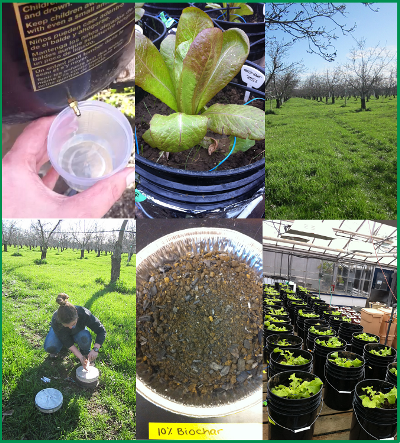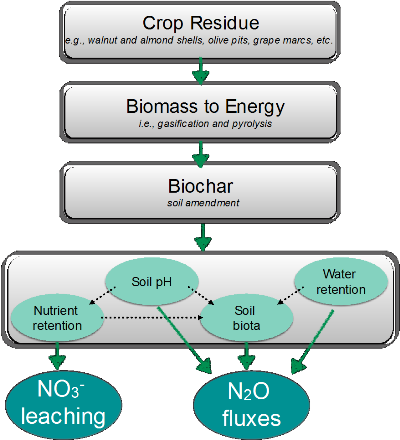Assessing the potential of biochar amendments to decrease N losses from agricultural soils
Summary
- The present study assesses the potential of biochar to decrease nitrogen (N) losses from agricultural soils.
- Biochar is produced as a by-product during the thermal conversion of biomass for energy generation.
- We quantify N losses via nitrous oxide (N2O) fluxes and nitrate (NO3-) leaching from soils under different types of amendments, fertilization rates, and pH.
- We assess the abundance of functional genes that encode enzymes responsible for nitrification and denitrification in bacteria.
Modern crop production relies on high nitrogen (N) inputs in order to maximize yields, but with the following implications:
* Agriculture has become the largest source of anthropogenic nitrous oxide (N2O). N2O is one of the most potent greenhouse gases.
* A large fraction of the N inputs leaches from the root zone to groundwater as nitrate (NO3). Both N2O emissions and NO3- leaching seriously impact the environment and threaten public health. One proposed solution is the amendment with biochar, which can alter soil properties (i.e., soil pH, water retention, soil aeration, and soil microorganisms) determining N2O production and N leaching.
Objective
We aim to identify the conditions under which biochar prevents N losses via N2O emissions and NO3- leaching. More specifically, we aim to elucidate the effects of different biochar materials, soil conditions and fertilizer rates on N losses under field, greenhouse, and laboratory conditions.
Approaches
This research consists of four parts:
i. A greenhouse pot trial that evaluates the effect of different biochar materials on the N cycling;
ii. A greenhouse pot experiment to elucidate interactions between N inputs and biochar amendments on N losses;
iii. Laboratory incubations to determine the role of soil pH on the end products of denitrification (N2O/N2 ratio); and
iv. A field scale experiment to determine the performance of biochar at the farm-level. Within these experiments, lettuce and walnut production will be used as commodity-case studies due to particular interest and potential for biochar use in these agroecosystems.
Expected outcomes
1) A comprehensive review of the scenarios in which biochar does or does not decrease N losses;
2) An understanding of the mechanisms in which biochar amendments interact with N2O emissions and NO3- losses; and
3) Information for key stakeholders concerning guidelines and recommendations for the use biochar in agriculture.
For more information please contact Johan Six ().


